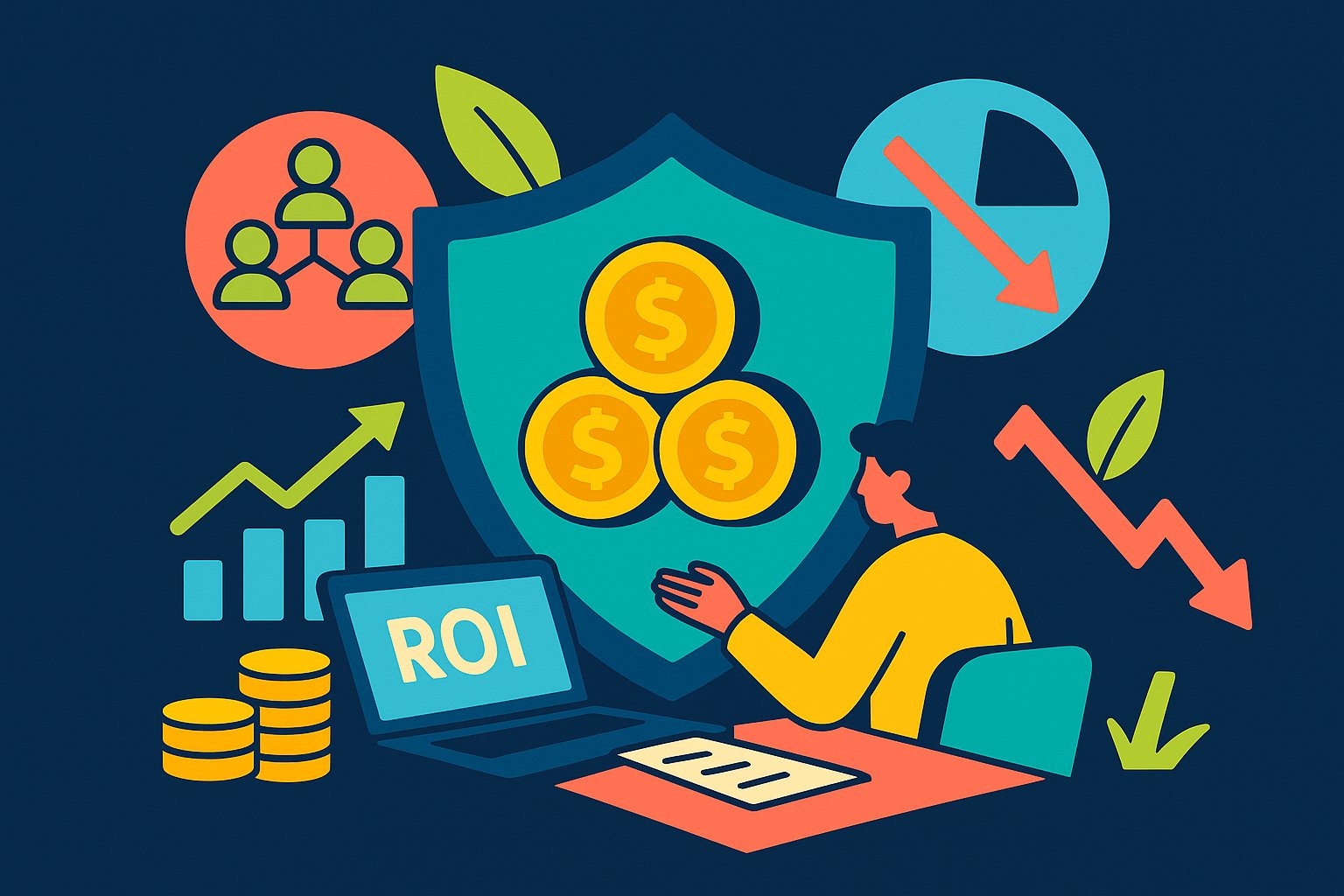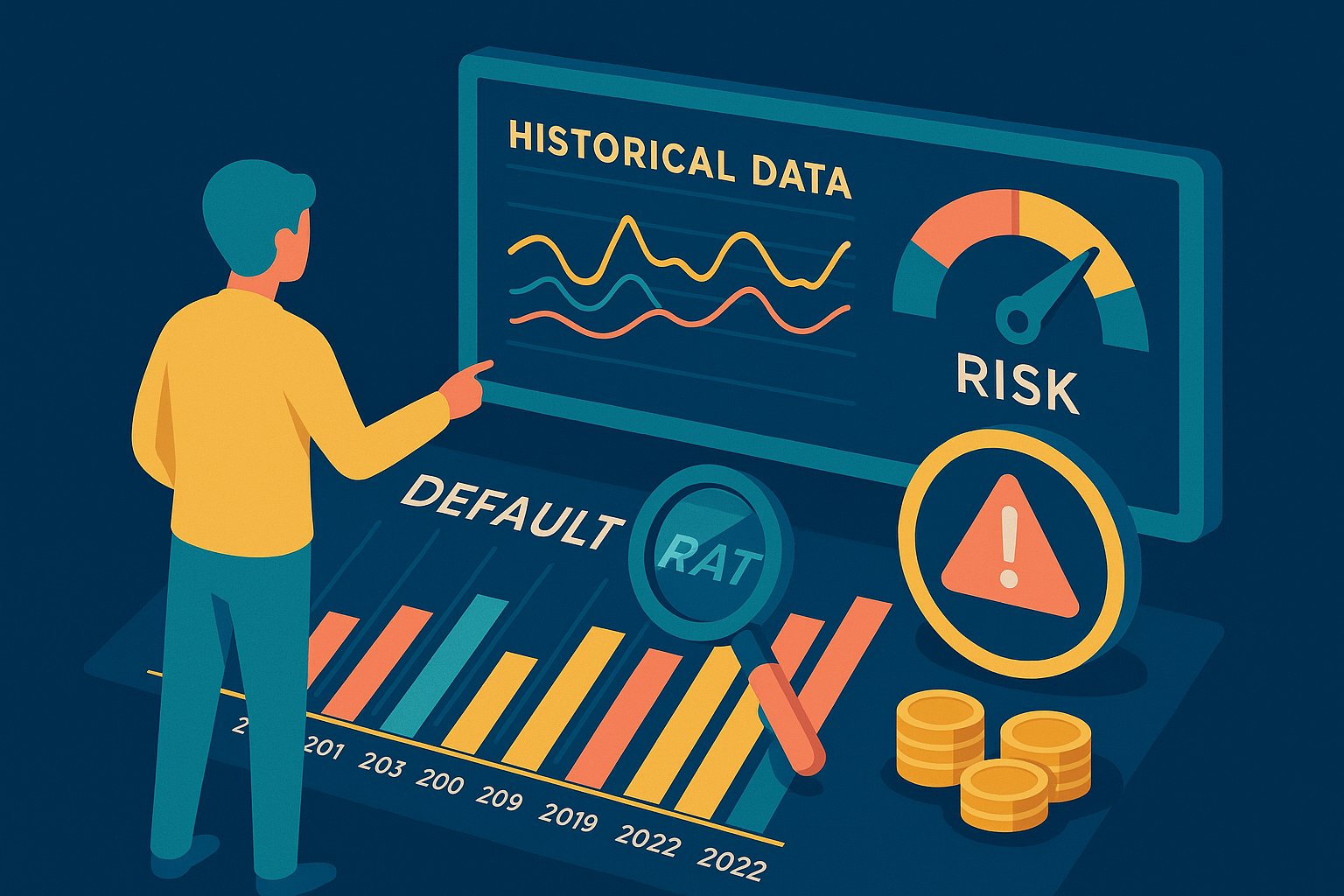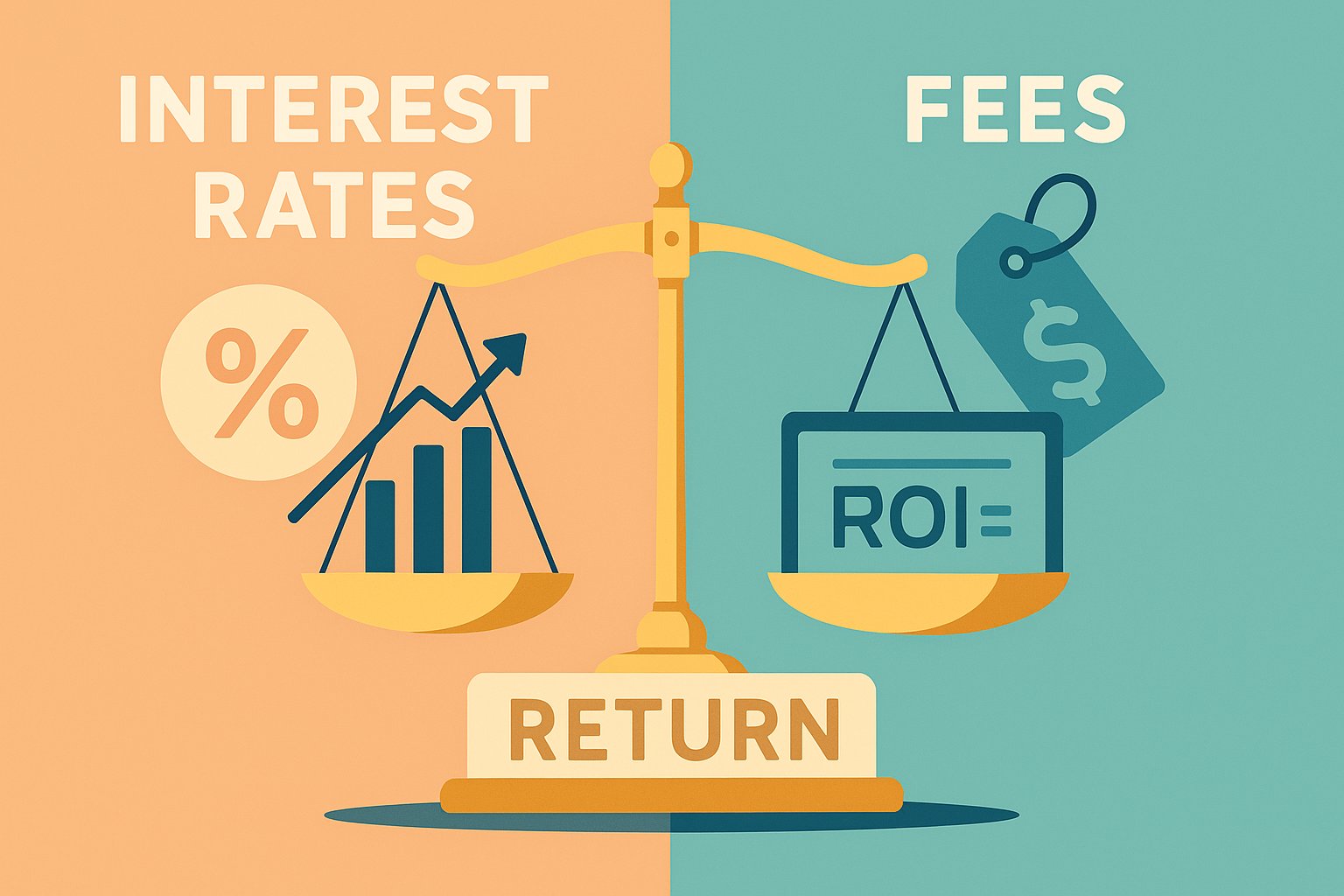Grasping the Foundations of ROI in Debt Crowdfunding
Investing in debt crowdfunding platforms offers an enticing blend of steady interest income and diversified risk exposure. Unlike equity crowdfunding, where returns hinge on a company’s valuation growth, debt-based investments promise contractual interest payments, often with predictable cash flows. However, calculating a true return on investment (ROI) demands more than a simple glance at stated interest rates. To uncover the real ROI—factoring in fees, defaults, reinvestment timing, and inflation—you need a systematic approach that reveals how much money you genuinely earn over time. In this guide, we’ll walk through each essential step, empowering you to compare opportunities, optimize your lending portfolio, and confidently assess your performance in the debt crowdfunding arena.
Unpacking the Difference Between Nominal and Real ROI
At first blush, the advertised yield on debt crowdfunding loans may appear sufficient for evaluating investment attractiveness. If a platform advertises an average interest rate of 9 percent, you might presume your ROI will closely mirror that figure. However, nominal returns—those quoted interest rates—do not account for critical factors like platform fees, loan origination costs, and potential loan defaults. Real ROI, by contrast, incorporates all expenses, losses, and the time value of money, giving a holistic view of investment performance. By distinguishing nominal yields from real returns, you avoid the trap of overestimating your profit potential and ensure you make smarter allocation decisions across various lending opportunities.
Collating Gross Yield Data from Loan Contracts
Before you calculate any multifaceted ROI metric, start with the raw terms of your debt crowdfunding investments. Each loan contract typically specifies a principal amount, an annual interest rate, a repayment schedule, and the loan term in months or years. For instance, a $5,000 loan at an annual rate of 8 percent over three years will produce scheduled interest payments each month alongside principal reductions. Multiply the annual interest rate by the outstanding principal for each month—and adjust for the actual days in each period—to derive a gross yield. By aggregating the interest you should receive over the loan’s lifetime, you establish a baseline from which you can deduct costs and losses to determine the net ROI.
Accounting for Platform and Servicing Fees
Once you understand the gross yield potential for each loan, subtract platform-specific fees that chip away at your earnings. Many debt crowdfunding platforms charge origination fees, often deducted from the borrower’s disbursement but effectively paid by the lender through slightly higher borrower rates. Servicing fees, typically assessed as a percentage of the outstanding loan balance, recur throughout the repayment period. For example, if a platform charges a 1 percent servicing fee on a $5,000 loan, you pay $50 annually (or approximately $4.17 per month) out of the interest you collect. By meticulously cataloging each line item—origination charges, servicing fees, and any withholding for payment processing—you ensure your ROI calculation captures the true net interest you will pocket.
Weighing the Impact of Delinquencies and Defaults
Debt crowdfunding inherently involves credit risk: some borrowers will miss payments or default entirely. While platforms typically assign credit grades or risk scores to mitigate this uncertainty, no model is perfect. To integrate default risk into your ROI, begin by tracking your portfolio’s historical performance—specifically, the delinquency and charge-off rates. If you find that loans in a particular risk category default 5 percent of the time, you can approximate future losses by applying that percentage to outstanding principal. For example, on a $5,000 note, a 5 percent default expectation equates to $250 in potential losses. Subtracting this estimate from your net interest after fees yields a more conservative—and realistic—ROI metric. Continually monitor actual defaults versus estimates, allowing you to refine your risk-adjusted ROI calculations over time.
Emphasizing Reinvestment Timing and Cash Flow Dynamics
Unlike stocks, where buying and holding may offer capital gains, debt crowdfunding investments generate a steady stream of interest and principal repayments. As borrowers pay down principal, your cash becomes available for reinvestment—either in new loans or as idle cash awaiting better opportunities. To accurately gauge your ROI, track the timing of each cash inflow and outflow. Consider using a time-weighted return (TWR) or internal rate of return (IRR) methodology to capture the precise effect of reinvestment decisions. For instance, a loan might yield 8 percent annually based on its original terms, but if you reinvest principal repayments at a 5 percent rate, your actual blended return differs. By applying IRR to your cash flow series—initial investment, monthly returns, and subsequent reinvestments—you capture the compound impact of timing, giving you a truer picture of your ROI.
Adjusting Returns for Inflationary Effects
While nominal interest rates might appear attractive in absolute terms, inflation erodes purchasing power over time. A 9 percent nominal return during a 3 percent inflationary period translates to a 6 percent real return. To adjust for inflation, subtract the annual inflation rate from your nominal or net yield. If your calculated net interest—after fees and defaults—is 7 percent per year, and inflation is running at 2 percent, your inflation-adjusted ROI is approximately 5 percent. Incorporating this adjustment is especially critical for multi-year loans, where inflationary shifts can vary significantly. By regularly updating your ROI calculations to reflect current consumer price index (CPI) data, you ensure your performance metrics remain aligned with economic realities.
Incorporating Tax Considerations into ROI
Interest income from debt crowdfunding is typically taxed as ordinary income, often at a higher rate than capital gains. To gauge your after-tax ROI, identify the marginal tax rate applicable to your interest earnings. If you earn 8 percent in gross interest but pay 30 percent in federal and state taxes on that interest, your after-tax yield becomes 5.6 percent before considering defaults and fees. For taxable accounts, multiply your net interest by (1 – your marginal tax rate) to determine your after-tax yield. Tax-advantaged accounts—IRAs or TIPS—may offer more favorable treatment, allowing you to defer or exempt taxes on interest. Factor in your specific tax situation to contrast apples-to-apples between taxable and tax-advantaged instruments, which ensures you’re comparing net ROI accurately across different investment vehicles.
Benchmarking Against Alternative Opportunities
A calculated ROI on debt crowdfunding investments becomes truly meaningful when compared against alternative allocation choices. Consider the yields on comparable fixed-income products—corporate bonds, municipal securities, or high-yield savings accounts. If a corporate bond fund yields 6 percent and an equivalent-risk debt note on a crowdfunding platform yields 7 percent after fees and defaults, the incremental return may justify the added credit risk. However, if high-quality municipal bonds yield 4 percent tax-free, a comparable after-tax return on a crowdfunding note might be less attractive. By benchmarking your net, risk-adjusted, and after-tax ROI against market alternatives, you gain perspective on whether debt crowdfunding occupies the optimal position in your broader portfolio.
Tracking ROI Over Time with a Consistent Framework
Consistent tracking is the cornerstone of understanding how your debt crowdfunding investments perform across different market cycles. Create a centralized worksheet—or leverage specialized portfolio tracking software—that logs every investment, disbursement, fee, default, reinvestment, and withdrawal. Each month, update your cash flows, adjust for new fees, and recalculate your IRR or TWR. Over the course of a year, you’ll be able to monitor changes in your portfolio’s risk profile, spot sectors or credit grades that underperform, and reallocate capital accordingly. By maintaining a disciplined tracking regimen, you evolve from a passive lender to an active portfolio manager, continuously refining your approach to maximize real ROI.
Embracing the Power of Diversification to Stabilize Returns
One of debt crowdfunding’s hallmarks is the ability to diversify across hundreds or thousands of small loans, each with its unique credit profile. While a single default can upset a concentrated portfolio, diversification smooths the impact: a 1 percent default rate on a $500 note costs you $5, whereas the same rate on a $50,000 investment costs $500. By spreading capital across different risk grades, industries, and loan durations, you reduce the volatility of your ROI. As you calculate returns, segment your portfolio by risk category and analyze ROI within each segment. You may find that lower-grade notes yield higher nominal interest but suffer greater losses—dampening net ROI—whereas mid-grade notes offer the ideal balance between yield and default risk. Use these insights to calibrate your diversification strategy for optimal real ROI.
Presenting Clear ROI Metrics to Stakeholders
Whether you’re sharing performance data with potential co-investors, a financial advisor, or simply assessing your progress, clarity is paramount. Avoid jargon-heavy tables; instead, present ROI metrics in both nominal and real terms, accompanied by explanations of the assumptions used—platform fees, default rates, reinvestment yields, and inflation adjustments. Include a concise summary of key portfolio statistics: average interest rate, weighted average default rate, net yield after fees, IRR over the past 12 months, and inflation-adjusted ROI. When stakeholders see a transparent, well-documented ROI calculation, they gain confidence in your methodology and are more likely to support future allocations to debt crowdfunding vehicles.
Adapting Your Strategy Based on ROI Insights
Calculating real ROI is not an exercise you complete and tuck away—it’s an ongoing feedback loop that shapes your investment strategy. If your current portfolio yields a real ROI of 5 percent, but a comparable bond index offers 4 percent with lower risk, you might shift capital away from high-risk notes toward safer opportunities. Conversely, if an underperforming risk grade contributes disproportionately to defaults, pare back allocations to that segment and redirect funds to higher-quality loans. By translating ROI insights into actionable adjustments—whether tweaking credit grade allocations, shortening loan durations, or focusing on specific industries—you continuously optimize your portfolio’s risk-adjusted performance and maximize returns over time.
Charting a Path to Sustainable ROI Growth
Calculating real ROI on debt crowdfunding investments requires diligence, transparency, and a rigorous framework that aggregates gross yields, fees, default losses, reinvestment timings, tax impacts, and inflationary pressures. By embracing time-weighted or IRR methodologies, you capture the nuanced effects of reinvesting principal repayments and account for cash flow timing. Benchmark your net returns against alternative fixed-income products, and use diversification to stabilize performance. Track ROI consistently, present clear metrics to stakeholders, and adapt your strategy based on data-driven insights. When you position ROI calculation as a dynamic, ongoing endeavor, you not only impress potential co-investors but also ensure that your debt crowdfunding allocations deliver sustainable, real returns in a changing economic landscape.




